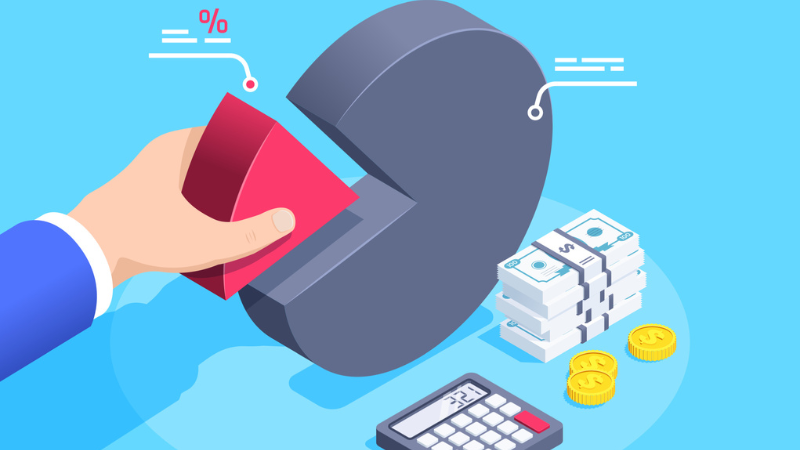
what is dividend and How it work
Ah, dividends! They’re like little bonuses that some companies give to their shareholders. When a company makes a profit, instead of keeping all the money for themselves, they may share a portion of it with the folks who own their stock. It’s a nice way for investors to get a little extra cash flow from their investments. So, it’s like the company saying, “Thanks for being part of the team, here’s a little something for you!”
Explanation with Description : After paying its creditors, a company can use part or whole of the residual profits to reward its shareholders as dividends. However, when firms face cash shortage or when firms it needs cash for reinvestments in firms, it can also skip paying dividends to their company shareholders .
When a company announces for dividend, it also fixes a record date and all shareholders who are registered as of that date become eligible to get dividend payout in proportion to their shareholding which is known as dividend. The company usually mails the cheques to theirs shareholders within in a period of week or so. Stocks are normally bought or sold with dividend until two business days ahead of the record date and then they turn in ex-dividend. A recent study found that dividend-paying firms in India fell from 24 per cent in 2001 to almost 16 per cent in 2009 before rising to 19 per cent in 2010.
In the US, and other country INDIA some of the companies like example in USA Sun Microsystems, Cisco and Oracle do not pay dividends and reinvest their total profit in the business itself. Dividend payment usually does not affect the fundamental value of a company’s share price. Companies with high growth rate and at an early stage of their ventures rarely pay dividends as they prefer to reinvest most of their profit to help sustain the higher growth and expansion. On the other hand, established companies try to offer regular dividends to reward loyal investors.

Sure thing! Let’s break it down with an example:
Step 1: Company Makes a Profit
Imagine you’re a shareholder in a company, let’s call it “ProfitCo.” ProfitCo has a successful year and makes a nice profit.
Step 2: Board of Directors Decision
ProfitCo’s board of directors gets together and decides what to do with the profit. They might choose to reinvest it into the company for growth, pay off debts, or reward their shareholders.
Step 3: Declaring Dividends
If the board decides to share the wealth, they declare a dividend. This is essentially a formal announcement saying, “Hey shareholders, we’re giving out some of the profits!”
Step 4: Dividend Amount
The board also determines how much each share gets. Let’s say they decide on a dividend of $1 per share.
Step 5: Payment to Shareholders
The company then distributes this amount to the shareholders. If you own 100 shares of ProfitCo, you’d receive $100 in dividends.
Example:
Let’s say ProfitCo has 1 million shares outstanding. If they declare a $1 dividend per share, the total dividend payout would be $1 million (1 million shares x $1).
So, as a shareholder, you’d get a piece of that $1 million based on the number of shares you own. It’s a sweet way for investors to get some cash back for supporting the company!
Different types of Dividends
Ah, dividends come in different flavors! Here are a few common types:
Cash Dividends
The most traditional form, where companies distribute cash to shareholders. It’s like getting a paycheck from your investment.
Stock Dividends
Instead of cash, companies distribute additional shares of stock. So, if you own 100 shares and the company issues a 5% stock dividend, you’d get an extra 5 shares.
Property Dividends
In some cases, companies might distribute physical assets or property as dividends. This is less common but can happen.
Scrip Dividends
Companies issue promissory notes or “scrip” instead of cash, which can be converted into shares later.
Special Dividends
These are one-time payments outside of the regular dividend schedule. They’re often prompted by extraordinary profits, asset sales, or other exceptional circumstances.
Liquidating Dividends
When a company is closing down or selling a portion of its business, it may distribute assets to shareholders. This is called a liquidating dividend.
Dividend Reinvestment Plans (DRIPs)
Rather than receiving cash, shareholders can choose to reinvest their dividends to purchase additional shares. It’s a way to compound your investment over time.
Each type has its own implications for investors, and companies may choose different forms of dividends based on their financial situation and goals

